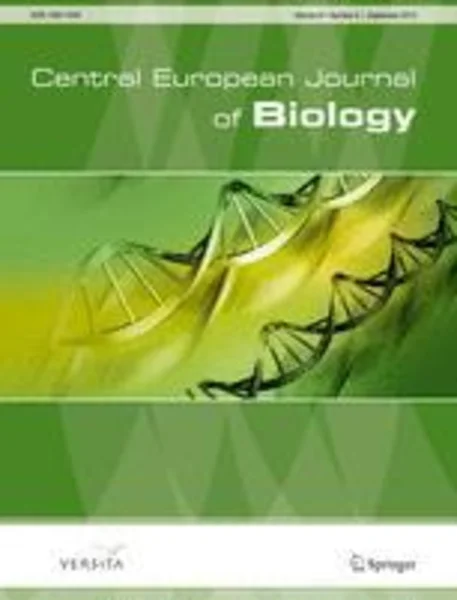-
differences in histological and physiological traits of ozone sensitive and resistant bean strains
جزئیات بیشتر مقاله- تاریخ ارائه: 1392/07/24
- تاریخ انتشار در تی پی بین: 1392/07/24
- تعداد بازدید: 884
- تعداد پرسش و پاسخ ها: 0
- شماره تماس دبیرخانه رویداد: -
an examination of possible histological causes of differences in ozone sensitivity between ozone sensitive (r123) and resistant (s156) phaseolus vulgaris strains was carried out. a distinction between the causes and effects of ozone sensitivity was also performed. we studied several morphological and histological traits, which included stomata number and size and also looked at different cell characteristics, such as stomatal index; leaf tissue thickness, fraction and gaseous conductance of intercellular air spaces. together with this, we made gas-exchange measurements and found inner co2 levels to be higher in the ozone sensitive strain. we also found several quantitative morphological parameters between the two strains to be initially different, however, these differences changed after exposure to summer climate and ozone. stomatal function between the two strains was also differently altered by the pollutant, which was apparent from differences in stomatal openness when investigated in summer. according to our histological data, epidermal cells of the ozone sensitive strain grew larger on leaves that developed after exposure to cumulative considerable phytotoxic ozone doses; moderately decreasing the number of stomata and epidermal cells per mm2 epidermal area despite the originally higher number of epidermal cells in sensitive plants. cross sections of injured sensitive leaves revealed disorganisation of mesophyllum tissues.
مقالات جدیدترین رویدادها
-
استفاده از تحلیل اهمیت-عملکرد در ارائه الگوی مدیریت خلاقیت سازمانی و ارائه راهکار جهت بهبود
-
بررسی تاثیر ارزش وجوه نقد مازاد بر ساختار سرمایه شرکت های پذیرفته شده در بورس اوراق بهادار تهران
-
بررسی تأثیر سطح افشای ریسک بر قرارداد بدهی شرکت های پذیرفته شده در بورس اوراق بهادار تهران
-
بررسی تأثیر رتبه بندی اعتباری مبتنی بر مدل امتیاز بازار نوظهور بر نقد شوندگی سهام با تأکید بر خصوصی سازی شرکت ها
-
تأثیر آمیخته بازاریابی پوشاک ایرانی بر تصویر ذهنی مشتری پوشاک ایرانی (هاکوپیان)
-
پایش، مدیریت انرژی و نظارت هوشمندانه در صنعت ساختمان با بکارگیری ابزاری قدرتمند تحت فناوری rfid
-
ارزیابی اثر الیاف کامپوزیتی frp در تقویت پایه های بتنی دایره ای شکل پل ها به روش اجزا محدود
-
فراوانی آلرژن های پوستی در بیماران مبتلا به درماتیت تماسی
-
شیوع سل ریه در بیماران مبتلا به آنتراکو فیبروزیس – زاهدان
-
بررسی نقش فیبرینوژن در ارتباط احتمالی عفونت هلیکوباکترپیلوری با بیماری های ایسکمیک قلبی
مقالات جدیدترین ژورنال ها
-
مدیریت و بررسی افسردگی دانش آموزان دختر مقطع متوسطه دوم در دروان کرونا در شهرستان دزفول
-
مدیریت و بررسی خرد سیاسی در اندیشه ی فردوسی در ادب ایران
-
واکاوی و مدیریت توصیفی قلمدان(جاکلیدی)ضریح در موزه آستان قدس رضوی
-
بررسی تاثیر خلاقیت، دانش و انگیزه کارکنان بر پیشنهادات نوآورانه کارکنان ( مورد مطالعه: هتل های 3 و 4 ستاره استان کرمان)
-
بررسی تاثیر کیفیت سیستم های اطلاعاتی بر تصمیم گیری موفق در شرکتهای تولیدی استان اصفهان (مورد مطالعه: مدیران شرکتهای تولیدی استان اصفهان)
-
مقاوم سازی دیوار برشی فولادی
-
تاثیر روابط دیپلماسی دنیای اسلام و ایتالیا بر هنر استان توسکانی پیکره مطالعاتی: معماری رومانسک، نقاشی قرون وسطی
-
بررسی رابطه بین کیفیت سود و استرس مالی با توجه به نقش تعدیل گر دانش مالی اعضای هیات مدیره
-
study on seismic dynamic response of shallow-buried subway station structure and ancillary facilities
-
comparing semi active control of bridge via variable stiffness and damping systems and mr dampers




سوال خود را در مورد این مقاله مطرح نمایید :